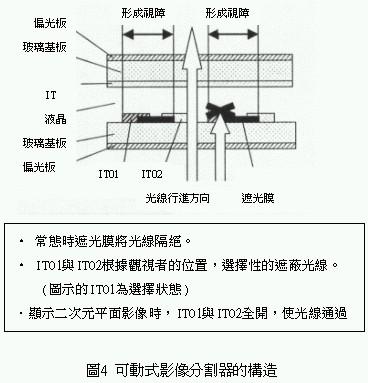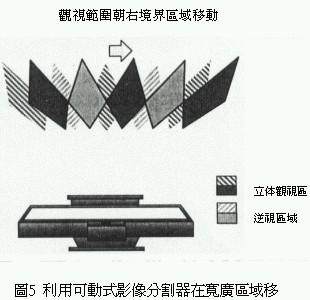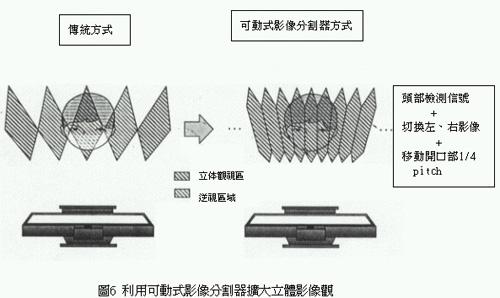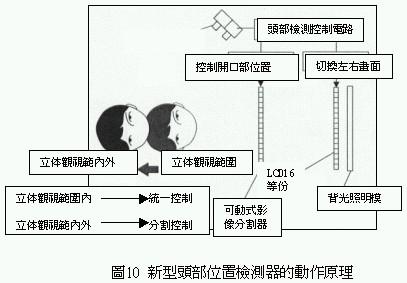Stereoscopic LCD display working principle
Since human eyes are accustomed to three-dimensional stereoscopic images in daily life, it is believed that the images displayed on movies and other monitors should also be stereoscopic images. However, it is surprising that this subconscious demand has long hindered Due to the shackles in technology, he accepts plane two-dimensional images quickly and without resistance. After the digital information revolution, in addition to driving the multimedia society to arrive early, it also reignited the eager demand for three-dimensional stereoscopic images in the fields of medical treatment, animation, CAD / CAM and so on. In view of this, this article will introduce the trends in the use of liquid crystal displays to produce three-dimensional stereoscopic images.
3D image splitter
Japan ’s SANYO company was the first to engage in research on three-dimensional stereoscopic image technology. As early as 1994, it launched a three-dimensional stereoscopic image divider that does not require special glasses. This image divider can be used to watch stereoscopic dynamic images. Basically it is based on parallax The principle of parallax barrier allows images to be arranged alternately through a slender column grating before being captured and observed by both eyes. Because the longitudinal images entering the left and right eyes are separated by the parallax barrier, the left and right eyes are captured. The image is slightly deviated and finally read as a three-dimensional image through the retina (Figure 1).

Using this principle, the most suitable position for the viewer to watch the picture can be obtained. In addition to providing the left and right eye images of the viewer, from the display area on the front of the image to the area covered by the optimal distance, the viewer Words become normal three-dimensional three-dimensional images. However, the images of the two eyes adjacent to the line of sight will be captured and read by the left and right eyes in an unconscious state to form the so-called retrospective field. In other words, the viewer using this three-dimensional stereoscopic image divider must be fixed The viewing position can produce a stereoscopic visual effect (Figure 2).

In order to improve the above-mentioned defects, a head tracking system was developed. With this detection system, the position of the viewer's head can be detected at any time. Once the reverse vision field is generated, the display will immediately switch between the left and right eyes. The image, in this way, can not only prevent the occurrence of reverse vision, but also expand the observable range of the three-dimensional stereoscopic image.
However, when the upper head detection system is actually used, it is found that the interface of each diamond-shaped area is not long and narrow, which causes the viewer to feel subtle overlapping images, crosstalk and black moire, and poor visibility and eyes. Very easy to sore and fatigue. In view of this, SANYO changed the system to an electronically driven movable head detection system composed of liquid crystals (Figure 4). If the viewer ’s head moves to the interface area, the new head detection system can immediately Detect and move the opening of the 3D stereo image splitter at the same time (Figure 5) , Adjust and control the image position of the left and right eyes displayed on the liquid crystal display. Using this new technology, the viewer can watch a very wide range of three-dimensional stereoscopic images (Figure 6).



Three-dimensional image display
The biggest shortcoming of the above-mentioned electronically driven liquid crystal head detection system is that the viewing distance (the distance from the screen of the display to the viewer) in the stereo viewing area still exists, so it is extremely restricted in application. In order to shorten the viewing distance and expand the application field, a new generation of three-dimensional display was developed. The characteristics of this new type of display are:
(A). Widely expand the scope of stereoscopic viewing (three times higher than before)
The traditional three-dimensional stereoscopic image display without special glasses, the horizontal viewing range of the small screen in the horizontal direction is larger than that of the large screen (Figure 7), because the viewing angle of the small screen is relatively small, Liquid crystal displays and image splitters are less prone to so-called moire interference. Using this physical phenomenon, the liquid crystal display and the image splitter are electronically divided into 16 equal parts to control the exclusive area (Figure 8)


In other words, it can fine-tune the opening of the image divider and the image in the LCD to the most appropriate state for the viewer's position, so that the viewer can watch the three-dimensional stereo regardless of the far and near stereoscopic viewing image. According to the stereoscopic head detection system (stereo head track) above the LCD monitor, the viewer's secondary element position data (front, rear, left, and right) is detected, and the left and right eye images of the LCD display and the opening of the image splitter are controlled and switched For the viewers outside the stereoscopic viewing area, the individual image segmentation control (Figure 9) and (Figure 10) is performed. As a result, as shown in Figure 11, the stereoscopic viewing area in the front-rear direction is more than three times larger than before. .

(B). Can effectively control the most appropriate stereoscopic viewing area
In the conventional display, the parts outside the three-dimensional viewing area are prone to problems such as ripples, distortion, or partial reverse vision, which causes viewers to have eyes that are easily fatigued and difficult to view three-dimensional images. The above-mentioned new electronic image splitter and liquid crystal display can monitor the status of viewers at any time and maintain the most appropriate three-dimensional viewing position.
(C). Can display high-quality two-dimensional image
Just turn off the shutter of the electronically driven liquid crystal display, you can get the same quality of the two-dimensional image of the general flat display.
(D). Low cost
The control method and structure of the above-mentioned new electronic image splitter and liquid crystal display are very simple, so it has the potential for lower prices.
Application of 3D image display
At present, three-dimensional image displays are mainly used in animation production of workstations (work staTIon), comics, cartoons, medical applications, educational applications, aviation, automotive simulation teaching, electronic game instruments and other fields. Examples include stereoscopic endoscopes for medical purposes, stereomicroscopes, surgery using guidance systems, medical diagnosis using CT and MRI, visual function examination, medical education, medical training, etc.
Conclusion
Although the new generation of three-dimensional three-dimensional display solves many shortcomings and greatly increases the scope of stereoscopic viewing, it also faces practical challenges such as insufficient consumer awareness, high price, and single-person use. Regarding the problem of single-person use, plans have been drawn up to explore and develop stereoscopic displays used by multiple people in multiple directions. In addition, the production accuracy, mass production, and control of the ripple are also one of the items to be overcome. It is expected that the market for three-dimensional stereoscopic images in the future will continue to expand with the advancement of software and hardware technologies, which means that it is more important to grasp the pulse of the market at any time and provide relevant technologies in a timely manner.
Solar energy powered,green lighting, no electric bill;Wider application, can be installed in any place with sufficient sunlight;No need for traditional electricity and little maintenance;No wire laying, easy installation and little maintenance required;Maintenance free battery, service life as long as 5 years;More detals about 9w Integrated Solar Street Light;Integration of solar garden light (9w) models;Solar panels are the most powerful 18v 25w (high-efficiency mono crystalline silicon);Battery type lithium battery;LED lamp (with body sensors) maximum power: 9w 12 v;High brightness LED chip brand American pury :Lumen (LM) 3000-3300 L
30W Integrated Solar Street Lights
30W Integrated Solar Street Lights,Integrated Solar Street Light 30W,Integrated 30W Solar Street Light,Integrated Solar 30W Led Street Light
Yangzhou Bright Solar Solutions Co., Ltd. , https://www.solarlights.pl